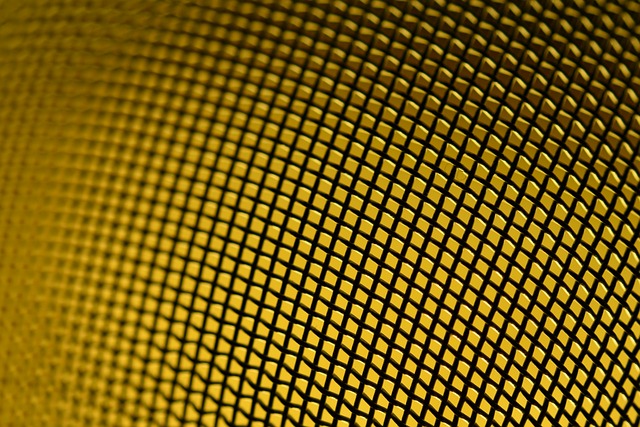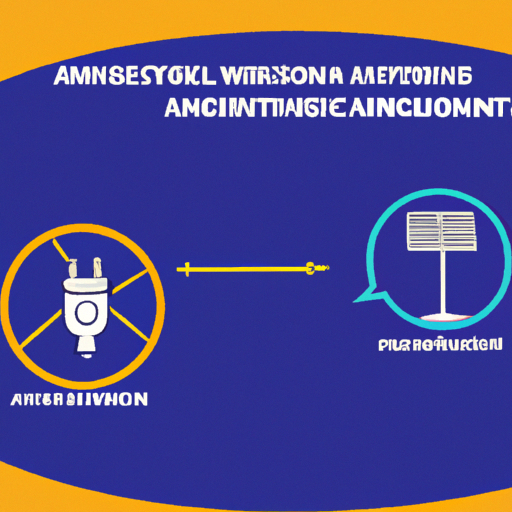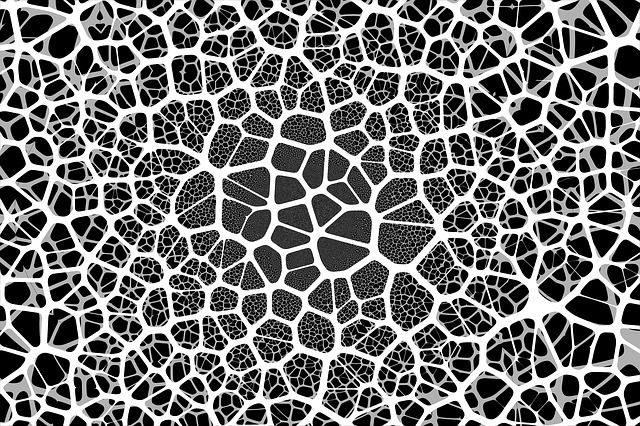Can I Connect My System To The Grid?
If you’re considering harnessing the power of solar energy, you may be wondering if it’s possible to connect your system to the grid. Well, you’re in the right place! At HomeSolarDIY, we’ve got all the answers you need. In our upcoming article, we’ll delve into the topic and provide you with all the information you need to make an informed decision.
Connecting your system to the grid has its advantages, from reducing your dependency on the grid to potentially earning credits for excess energy produced. However, there are also important factors to consider, such as obtaining the necessary permits and understanding the regulations in your area. So stay tuned, as we’ll break it all down for you and guide you through the process. With HomeSolarDIY, you’ll be empowered to make the right choices for your home and take a step towards a more sustainable energy future.

This image is property of pixabay.com.
Understanding Grid Connection
What is grid connection?
Grid connection refers to the process of connecting your solar power system to the local electrical grid. By doing so, you can not only generate your own clean energy but also have the ability to export any excess electricity back to the grid, allowing others to benefit from your solar power generation. Grid connection is typically done through a two-way metering system that measures both the electricity you consume from the grid and the excess electricity you supply.
Benefits of connecting your system to the grid
Connecting your system to the grid comes with several benefits. Firstly, it provides a reliable source of electricity even during periods of low solar generation, such as during cloudy or rainy days. This ensures that you have a stable power supply throughout the year.
Secondly, grid connection allows you to take advantage of net metering programs. With net metering, any excess electricity your system produces is fed back into the grid and credited to your account. This means that when your system generates more electricity than you consume, you essentially build up credits that can be used to offset your electricity bill when your system produces less or during peak consumption periods.
Lastly, grid connection provides the opportunity to contribute to the local community’s energy needs. By exporting excess electricity to the grid, you are helping to reduce the reliance on traditional fossil fuels and promoting the use of renewable energy sources.
Determine Grid Compatibility
Assessing grid compatibility
Before connecting your solar power system to the grid, it is important to assess the compatibility of your system with the local electrical grid. This involves verifying whether your system meets the technical specifications and requirements set by the grid operator.
Factors such as the capacity of your system, voltage levels, and grid connection standards need to be taken into consideration. It is advisable to consult with a professional electrician or solar installer who can assess the compatibility and guide you through the process.
Considerations for grid connection
There are a few key considerations to keep in mind when connecting your system to the grid. Firstly, you will need to determine the type of grid connection you require – single-phase or three-phase. This will depend on your electricity consumption needs and the capacity of your system.
Additionally, you must ensure that your electrical infrastructure, including your main switchboard and wiring, can handle the increased load from the solar power system. Upgrading or modifying your electrical system may be necessary to ensure safety and compliance with regulations.
Lastly, it is important to check with the local grid operator or utility provider for any specific requirements or permits that may be needed for grid connection. This can vary depending on your location, so it is crucial to have a clear understanding of the process before proceeding.

This image is property of pixabay.com.
Grid Connection Process
Obtaining necessary permits and approvals
Before connecting your system to the grid, you will need to obtain the necessary permits and approvals from the relevant authorities. This typically involves submitting an application to the local grid operator or utility provider.
The application will require information about your solar power system, including its capacity, location, and technical specifications. The grid operator will review the application to ensure compliance with safety regulations and grid connection standards. Once approved, you will be issued with a connection agreement or permit.
Hiring a professional electrician
Grid connection is a complex process that requires the expertise of a professional electrician. It is crucial to hire a qualified and experienced electrician who specializes in solar installations to ensure a safe and efficient connection.
The electrician will be responsible for installing and connecting the necessary equipment, including inverters, meters, and protective devices. They will also handle the electrical wiring and ensure that all connections are properly grounded and compliant with safety regulations.
Choosing the right equipment for grid connection
When connecting your system to the grid, it is important to choose the right equipment that meets the technical requirements and standards. This includes selecting the appropriate inverters, meters, and protective devices.
Inverters are essential for converting the direct current (DC) produced by your solar panels into the alternating current (AC) that is used in the electrical grid. The type and capacity of inverters will depend on the size and configuration of your system.
Meters, such as smart or bi-directional meters, are used to measure the electricity consumed from and exported to the grid. These meters play a crucial role in calculating the net energy exchange for net metering purposes.
Protective devices, such as surge arresters and disconnect switches, are installed to protect the system from voltage surges and ensure the safety of the grid.
Safety Measures
Understanding safety regulations
Safety is of utmost importance when connecting your system to the grid. It is crucial to understand and comply with the safety regulations and standards set by the local authorities and grid operator.
These regulations cover various aspects of the grid connection process, including electrical wiring, grounding, and protection against voltage surges. They are put in place to ensure the safety of both the installer and the grid.
It is essential to hire a professional electrician who is well-versed in these safety regulations and practices. They will ensure that all the necessary safety measures are implemented during the grid connection process.
Proper grounding and wiring
Proper grounding and wiring are essential for the safe operation of your solar power system and its connection to the grid. The electrical wiring should be done in accordance with the relevant electrical codes and standards.
Grounding ensures that any potential electrical faults or surges are safely directed to the earth, protecting both the system and the occupants of the building. This involves connecting the system’s electrical components to a grounding electrode system, typically consisting of ground rods or plates.
The wiring should be done with high-quality, durable materials that are suitable for outdoor use and capable of handling the electrical load of the system. It is important to use appropriate wire gauge to minimize resistance and voltage drop.
Protective measures for grid connection
In addition to grounding and proper wiring, there are several protective measures that should be implemented during the grid connection process. These measures are designed to prevent electrical accidents, protect the system from damage, and ensure the stability of the grid.
Surge protection devices are installed to protect the system from lightning strikes and voltage surges. These devices divert excess electrical energy to the ground, preventing damage to the system’s electrical components.
Disconnect switches are used to isolate the system from the grid during maintenance or in the event of a fault. These switches allow for safe and controlled disconnection of the system to protect both the installer and the grid operator.

This image is property of pixabay.com.
Net Metering
What is net metering?
Net metering is a billing arrangement that allows solar power system owners to offset their electricity consumption by exporting any excess electricity back to the grid. Under a net metering program, the electricity meter is capable of measuring both the electricity consumed from the grid and the electricity exported to the grid.
During periods when your solar power system generates more electricity than you consume, the excess electricity is fed back into the grid and credited to your account. This means that you can effectively offset your electricity bill by using the credits earned during times of excess generation.
How does net metering work in grid connection?
In grid connection, net metering works through a two-way metering system that measures the bi-directional flow of electricity. The meter is capable of recording both the electricity you consume from the grid and the excess electricity you export.
When your system produces more electricity than you consume, the surplus electricity is fed back into the grid. This causes your meter to run backwards, effectively accumulating credits on your account. These credits can then be used to offset your future electricity bills.
Net metering provides a fair and equitable arrangement for solar power system owners, allowing them to benefit from their excess solar generation and reducing their reliance on grid electricity.
Interconnection Agreements
Understanding interconnection agreements
Interconnection agreements are contracts or agreements between the solar power system owner and the grid operator or utility provider. These agreements outline the terms and conditions for connecting the system to the grid and ensure the safe and reliable operation of the grid.
The agreements typically cover aspects such as technical requirements, performance standards, liability, and dispute resolution. They provide a framework for the installation, operation, and maintenance of the system, as well as the responsibilities of both parties.
Interconnection agreements vary depending on the location and grid operator. It is important to carefully review and understand the terms before signing the agreement to ensure compliance and a smooth grid connection process.
Steps to obtain interconnection agreements
Obtaining interconnection agreements typically involves several steps. Firstly, you will need to submit an application to the grid operator or utility provider. The application will require information about your solar power system, including its capacity, location, and technical specifications.
The grid operator will review the application to assess its compliance with safety regulations and grid connection standards. If approved, you will be issued with an interconnection agreement that outlines the terms and conditions of the connection.
It is advisable to consult with a professional electrician or solar installer during this process to ensure that all the necessary information and documentation are provided. They can also assist in reviewing and negotiating the terms of the agreement to ensure a favorable outcome.

Monitoring and Maintenance
Implementing a monitoring system
Monitoring the performance of your grid-connected solar power system is crucial to ensure its optimal operation and identify any issues or inefficiencies. Implementing a monitoring system allows you to track the energy production, consumption, and grid interaction in real-time.
There are various monitoring options available, ranging from basic meters to more advanced online monitoring platforms. Basic meters provide real-time information on energy production and consumption, while online platforms allow for more detailed analysis and reporting.
Monitoring systems provide valuable insights into the performance of your system, enabling you to identify any potential faults or underperformance. This allows for prompt maintenance and troubleshooting, ultimately maximizing your system’s efficiency and longevity.
Regular maintenance for grid connection
Regular maintenance is important to ensure the continued performance and reliability of your grid-connected solar power system. While solar panels require minimal maintenance, other components such as inverters and meters may require periodic inspections and servicing.
It is recommended to follow the manufacturer’s guidelines for maintenance and schedule regular inspections by a qualified electrician or solar installer. They can check the condition of the system, clean the panels if necessary, and perform routine maintenance tasks.
Regular maintenance also includes monitoring your system’s performance and analyzing the data collected from the monitoring system. By tracking the energy production and consumption trends, you can identify any deviations from the expected performance and take appropriate action.
Financial Considerations
Costs and incentives of grid connection
Grid connection comes with certain costs and expenses that need to be considered. These include the cost of equipment, installation, permits, and inspections.
The cost of the solar power system will depend on its size, capacity, and the quality of the components. It is important to choose high-quality equipment that is durable and efficient, as this will ensure the long-term performance and reliability of your system.
Installation costs will vary depending on the complexity of the project and the location. It is advisable to obtain multiple quotes from reputable installers and compare the prices and services offered.
However, it is important to note that grid connection also comes with financial incentives and benefits. Net metering, as mentioned earlier, allows you to offset your electricity bill by exporting excess electricity to the grid. This can result in significant savings over time, depending on your energy consumption and solar generation.
Additionally, some governments and utility providers offer incentives and rebates for grid-connected solar power systems. These incentives can help offset the initial costs and make grid connection more financially viable.
Return on investment for grid-connected systems
Determining the return on investment (ROI) for a grid-connected solar power system involves analyzing the costs and benefits over its lifespan. The ROI will depend on various factors, including the initial investment, energy consumption, solar generation, electricity tariffs, and net metering policies.
To assess the ROI, it is important to consider the payback period – the time it takes to recoup the initial investment through energy savings and net metering credits. This period will depend on the local electricity tariffs and the amount of surplus electricity your system can export.
While the initial costs of grid connection may seem high, the long-term savings and benefits can outweigh the investment. The ROI can vary significantly depending on the individual circumstances, so it is recommended to consult with professionals and conduct a thorough analysis before making a decision.

Advantages and Disadvantages
Pros of connecting your system to the grid
Connecting your system to the grid offers several advantages. Firstly, it provides a reliable source of electricity even during periods of low solar generation. This ensures a steady power supply throughout the year, regardless of weather conditions or changes in energy demand.
Secondly, grid connection allows you to take advantage of net metering programs, enabling you to offset your electricity bill and potentially earn credits for excess generation. This can result in significant financial savings and a shorter payback period for your solar power system.
Furthermore, grid connection allows you to contribute to the local community’s energy needs by exporting excess electricity back to the grid. This promotes the use of renewable energy sources and reduces the reliance on fossil fuels.
Cons of connecting your system to the grid
There are also some disadvantages to consider when connecting your system to the grid. Firstly, grid connection involves additional costs, including equipment, installation, permits, and inspections. These costs can vary depending on the size of your system and the complexity of the grid connection.
Secondly, grid connection is subject to the regulations and policies set by the local grid operator or utility provider. This means that any changes in the net metering policies or electricity tariffs can affect the financial benefits and payback period of your system.
Lastly, grid-connected solar power systems are dependent on the stability and reliability of the grid. Any disruptions or outages in the grid can affect the availability of electricity from both the grid and your solar power system.
Conclusion
When deciding whether to connect your system to the grid, it is important to consider various factors such as grid compatibility, safety measures, financial considerations, and the advantages and disadvantages. By understanding the grid connection process and the benefits it brings, you can make an informed decision that suits your energy needs and goals.
At HomeSolarDIY, we believe in empowering individuals to take control of their energy future. Grid connection offers a pathway to cleaner, more sustainable energy and the opportunity to contribute to a greener world. With the right knowledge, tools, and support, you can embark on a solar journey that not only benefits you but also future generations.
Join us at HomeSolarDIY and become part of a community dedicated to creating a sustainable future through solar power. Let us guide you on your solar journey, answering your questions and providing the resources you need to make a difference. Together, we can create a brighter, greener world.

